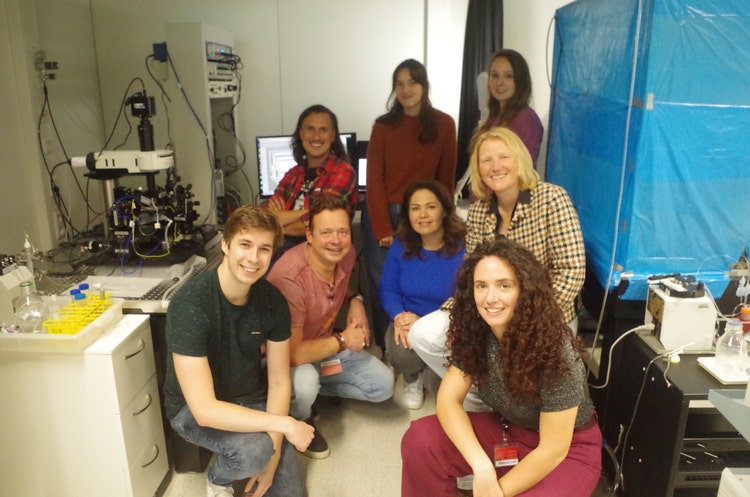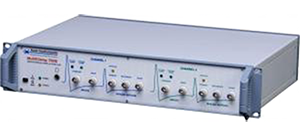
Wierenga lab uses MultiClamp 700B Microelectrode Amplifier to study the molecular mechanisms of inhibitory synapses
COMPANY/UNIVERSITY
Donders Institute for Brain, Cognition and Behaviour, Radboud University, Nijmegen, the Netherlands
TEAM MEMBERS
Prof. Dr. Corette Wierenga, Dr. Carlijn Peerboom, Ate Bijlsma, Lotte Herstel, Dr. Bart Jongbloets, Zehra Kazmi, Dr. Ségolène Bompierre
PRODUCTS USED
MultiClamp 700B Microelectrode Amplifier
The Challenge
Dr. Wierenga’s lab at the Donders Institute focuses on investigating the formation and modulation of brain connections through molecular signals and neuronal activity. Their particular emphasis lies in understanding inhibitory synapses, which play a crucial role in controlling the activation and information processing of brain cells. These synapses are vital for shaping neural circuits during brain development and learning. Various brain disorders, particularly neurodevelopmental disorders such as autism, have been linked to specific defects in inhibitory synapses. The team's primary objective is to uncover the molecular mechanisms underlying the formation and plasticity of these synapses and comprehend their impact on information processing in the brain.
The team performs whole-cell patch-clamp recordings to determine how synaptic changes affect inhibitory currents, and how intrinsic excitability is affected by changes in ion channels. They conduct recordings from individual brain cells and often combine electrophysiology measurements with advanced microscopy techniques, where they follow changes in living brain cells over time. These experiments are technically challenging and critically depend on stable and reliable electrophysiological recordings.

The Solution
To measure the small currents generated by synapses, the team relies on the MultiClamp 700B Microelectrode Amplifier. The Wierenga team has performed two-photon glutamate uncaging to activate individual excitatory synapses, and they are using biosensors to monitor intracellular signaling molecules such as calcium, chloride, and cAMP/PKA. Prof. Dr. Wierenga and her team have been successfully integrating electrophysiology and advanced microscopy for over a decade.

- CA1 pyramidal cell filled with a fluorescent dye (red) via the patch pipette, revealing its dendritic arbor. The team investigates the interactions of this excitatory pyramidal cell with surrounding inhibitory neurons (green).

Axon Instruments Patch-Clamp Amplifiers
Products Used
The Axon Instruments® series of amplifiers provide best-in-class solutions for the entire range of patch-clamp experiments. The portfolio of amplifiers includes Axopatch™ 200B for ultra low-noise single-channel recordings, MultiClamp™ 700B for whole-cell voltage-clamp and high-speed current-clamp recordings, and Axoclamp™ 900A for two-electrode voltage-clamp and current-clamp recordings.
The Results
In a recent study, the team investigated alterations in synaptic connections associated with neurodevelopmental disorders (Peerboom et al., 2023). To simulate these disorders, they induced a developmental delay in cultured brain slices, resembling the observed delays in neurodevelopmental conditions. Through electrophysiological recordings, they tracked the developmental progress of synaptic connections and the firing properties of the developing brain cells within these slices. These experiments provide valuable insights into the intricate nature of neurodevelopmental disorders, shedding light on their complexity. In future studies, they plan to strengthen the link of electrophysiological alterations to specific behavioural changes (Bijlsma et al., 2023) and to neurodevelopmental disorders.
References
Find out more about Dr. Corette Wierenga
Delaying the GABA shift indirectly affects membrane properties in the developing hippocampus.
Social play behavior shapes the development of prefrontal inhibition in a region-specific manner.